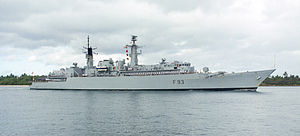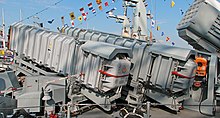
The Type 23 frigate or Duke class is a class of frigates built for the United Kingdom's Royal Navy. The ships are named after British Dukes, thus leading to the class being commonly known as the Duke class. The first Type 23, HMS Norfolk, was commissioned in 1989, and the sixteenth, HMS St Albans was commissioned in June 2002. They form the core of the Royal Navy's destroyer and frigate fleet and serve alongside the Type 45 destroyers. They were designed for anti-submarine warfare, but have been used for a range of uses. Ten Type 23 frigates remain in service with the Royal Navy, with three vessels having been sold to the Chilean Navy, and one being retired in 2021, and two being retired in 2023.

The Type 22 frigate also known as the Broadsword class was a class of frigates built for the British Royal Navy. Fourteen were built in total, with production divided into three batches.

The Type 45 destroyer, also known as the D or Daring class, is a class of six guided-missile destroyers built for the United Kingdom's Royal Navy in the early 21st century. The class is primarily designed for anti-aircraft and anti-missile warfare and is built around the PAAMS air-defence system using the SAMPSON Active electronically scanned array (AESA) and the S1850M long-range radars. The first three destroyers were assembled by BAE Systems Surface Fleet Solutions from partially prefabricated "blocks" built at different shipyards; the remaining three were built by BAE Systems Maritime – Naval Ships. The first ship in the Daring class, HMS Daring, was launched on 1 February 2006 and commissioned on 23 July 2009.

HMS Grafton is a Type 23 frigate formerly in service with the Royal Navy. She was the ninth vessel to bear the name, and is named after the Duke of Grafton. Ordered in January 1992, Grafton was laid down on 13 May 1993 by Yarrow Shipbuilders. The frigate was launched on 5 November 1994 and commissioned into the Royal Navy on 29 May 1997 with the pennant number F80. In 2007 the ship was transferred to Chile as Almirante Lynch and, having undergone a significant upgrade from 2019 to 2020, remains in service with the Chilean Navy.

Regina Maria (F222) is a Type 22 frigate of the Romanian Naval Forces, formerly a Royal Navy ship named HMS London (F95). It is named after Queen Marie of Romania, wife of King Ferdinand I of Romania.

The Type 21 frigate, or Amazon-class frigate, was a British Royal Navy general-purpose escort that was designed in the late 1960s, built in the 1970s and served throughout the 1980s into the 1990s.

HMS Amazon was the first Type 21 frigate of the Royal Navy. Her keel was laid down at the Vosper Thornycroft shipyard in Southampton, England. The ship suffered a fire in the Far East in 1977, drawing attention to the risk of building warships with aluminium superstructure.
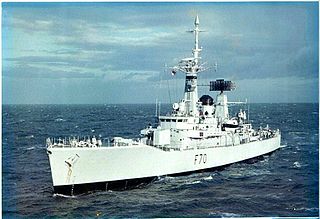
The Leander-class, or Type 12I (Improved) frigates, comprising twenty-six vessels, was among the most numerous and long-lived classes of frigate in the Royal Navy's modern history. The class was built in three batches between 1959 and 1973. It had an unusually high public profile, due to the popular BBC television drama series Warship. The Leander silhouette became synonymous with the Royal Navy through the 1960s until the 1980s.

HMS Andromeda was a Leander-class frigate of the Royal Navy. She was built at HM Dockyard Portsmouth. She was launched on 24 May 1967 and commissioned into the Royal Navy on 2 December 1968. She took part in the Falklands War. She was sold to India in 1995, for use as a training ship, being renamed INS Krishna. She was finally decommissioned in May 2012.
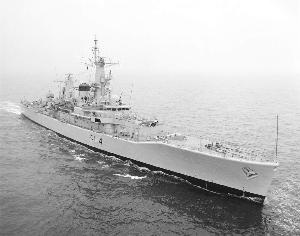
HMS Ajax was a Leander-class frigate of the Royal Navy. She was built by the famous Cammell Laird company of Birkenhead. Ajax was launched on 16 August 1962 and commissioned on 10 December 1963. She was originally intended to be named HMS Fowey, and laid down as a Rothesay class, but instead became part of Batch 1 of the Leander class.

HMS Dido was a Royal Navy (RN) Leander-class frigate. Entering service in 1961, Dido was involved in the Indonesia–Malaysia confrontation, served with NATO's Standing Naval Force Atlantic on several occasions, and was one of the frigates used for the filming of the drama series Warship.
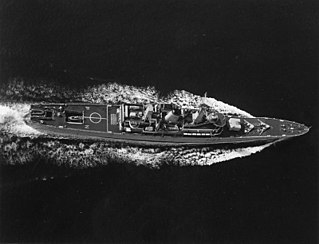
HMS Penelope was a Leander-class frigate of the Royal Navy. In the Falklands War, Penelope fired on an Argentine patrol boat and claimed to be the last ship attacked by Argentine aircraft over the course of the war. In 1991, she was commissioned into the Ecuadorean Navy, and renamed Presidente Eloy Alfaro.

HMS Apollo was a batch 3B broadbeam Leander-class frigate of the Royal Navy. She was, like the rest of the class, named after a figure of mythology. Apollo was built by Yarrow Shipbuilders of Scotstoun. She was launched on 15 October 1970 and commissioned on 28 May 1972, making her the penultimate Leander.

HMS Ariadne was a Leander-class frigate of the Royal Navy. She was launched in 1971, was sold to Chile in 1992 and sunk as a target hulk in 2004.

HMS Danae was a Leander-class frigate of the Royal Navy. She was, like the rest of the class, named after a figure of mythology. Danae was built by Devonport Dockyard. She was launched on 31 October 1965 and commissioned on 10 October 1967.
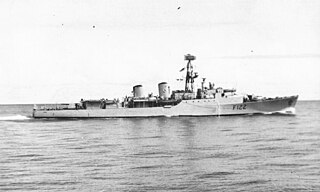
HMS Gurkha (F122) was a Tribal-class frigate of the Royal Navy. She was named after an ethnic group located in Nepal, and who continue to serve in the British Army. She was sold to the Indonesian Navy in 1984 and renamed KRI Wilhelmus Zakarias Yohannes (332).

The Type 82 or Bristol-class destroyer was a 1960s guided missile destroyer design intended to replace County-class destroyers in the Royal Navy. Originally eight warships were planned to provide area air-defence for the four planned CVA-01 aircraft carriers. They would also have been able to operate independently as modern cruisers "East of Suez".

HMNZS Taranaki (F148) was a modified Rothesay-class frigate in service with the Royal New Zealand Navy (RNZN) from 1960 to 1982. Along with her sister ship Otago, the pair of ships formed a core part of the RNZN escort force throughout the 1960s and 1970s. She was named after Taranaki Province.

The Kortenaer class was a class of anti-submarine frigates of the Royal Netherlands Navy. Like other frigate types of the 1970s and 1980s, they featured a COGOG propulsion system with separate cruise and sprint gas turbines. Ten were built by De Schelde in Vlissingen and two by Wilton-Fijenoord in Schiedam between 1978 and 1982. Only ten served with the Royal Netherlands Navy: two were sold to Greece's Navy while still under construction and replaced by two Jacob van Heemskerck-class frigates which were an air defence variant of the Kortenaer class. The Greek frigates were renamed the Elli class. After service with the Dutch ended, eight of the frigates were sold to Greece in 1992 and the remaining two to the United Arab Emirates. Three of the ships have since been retired from active military service with one converted into the superyacht Yas.
